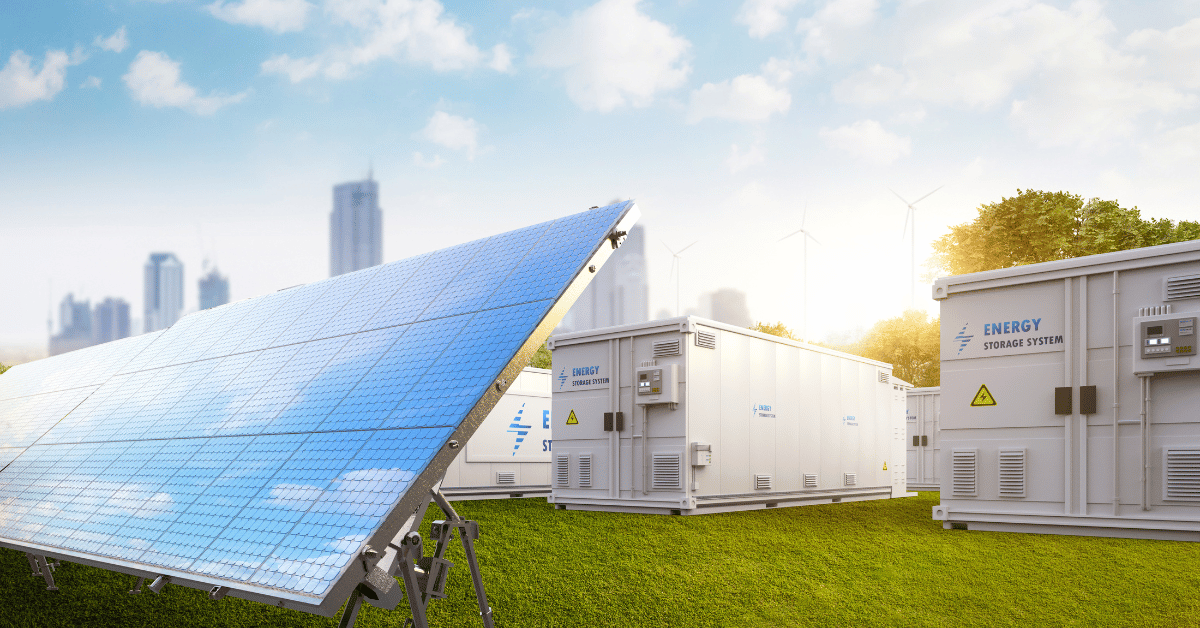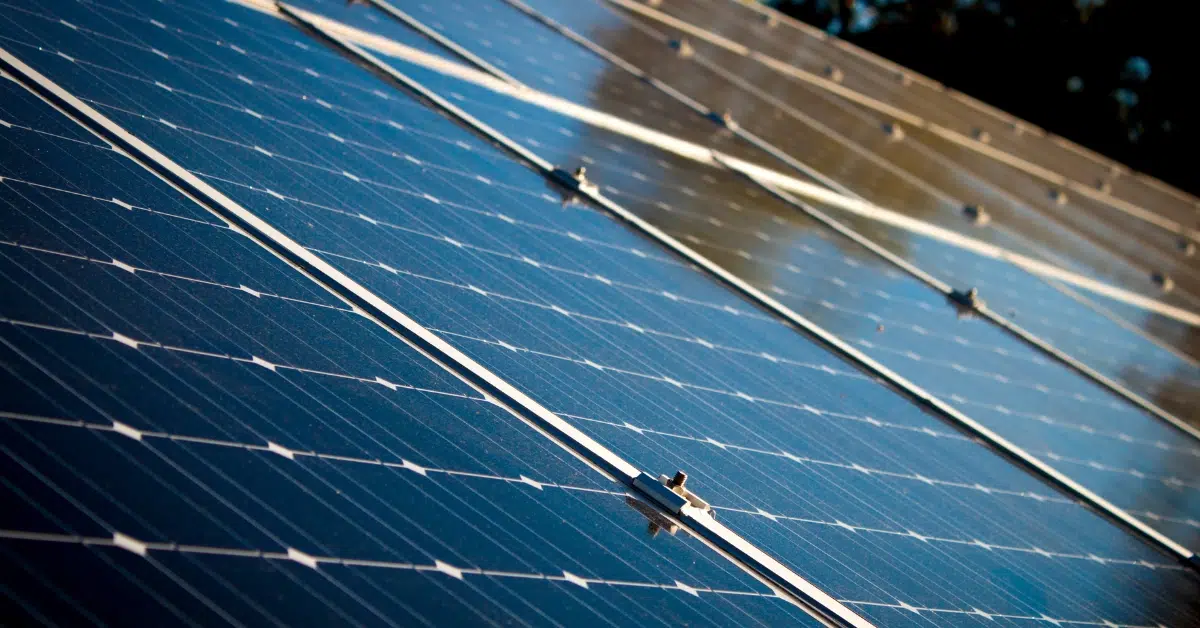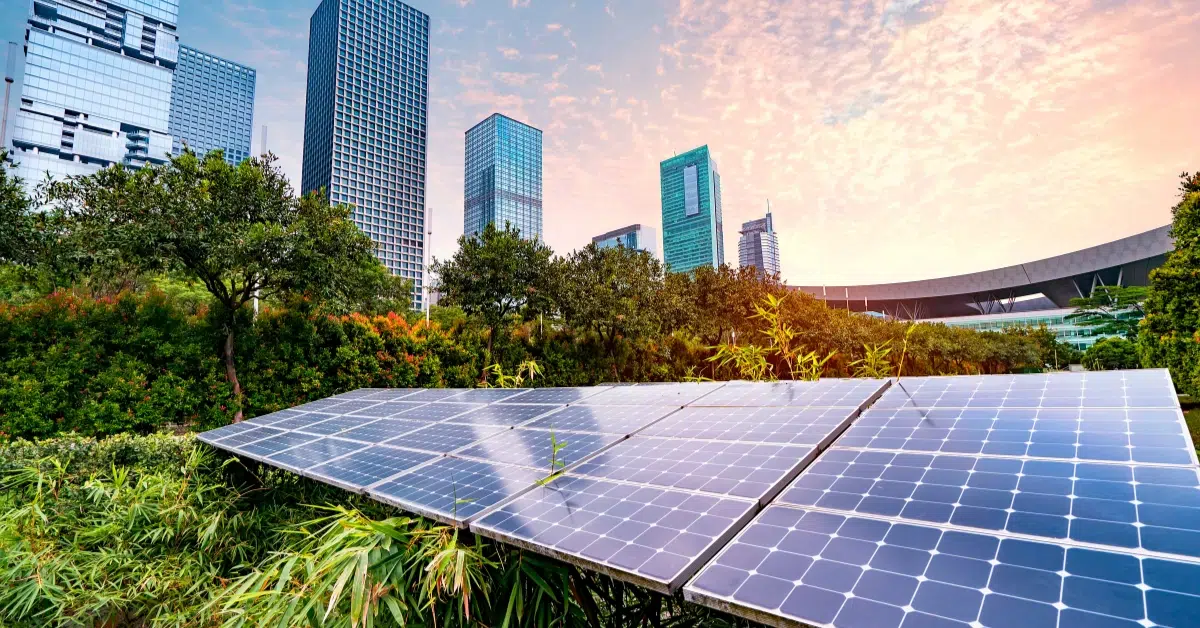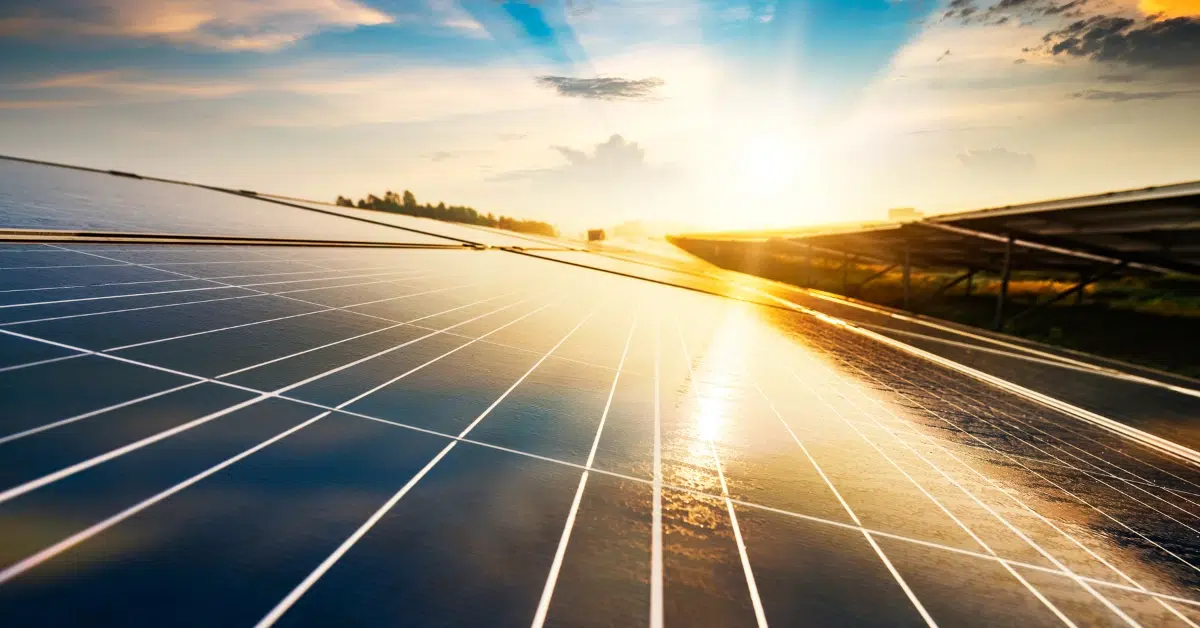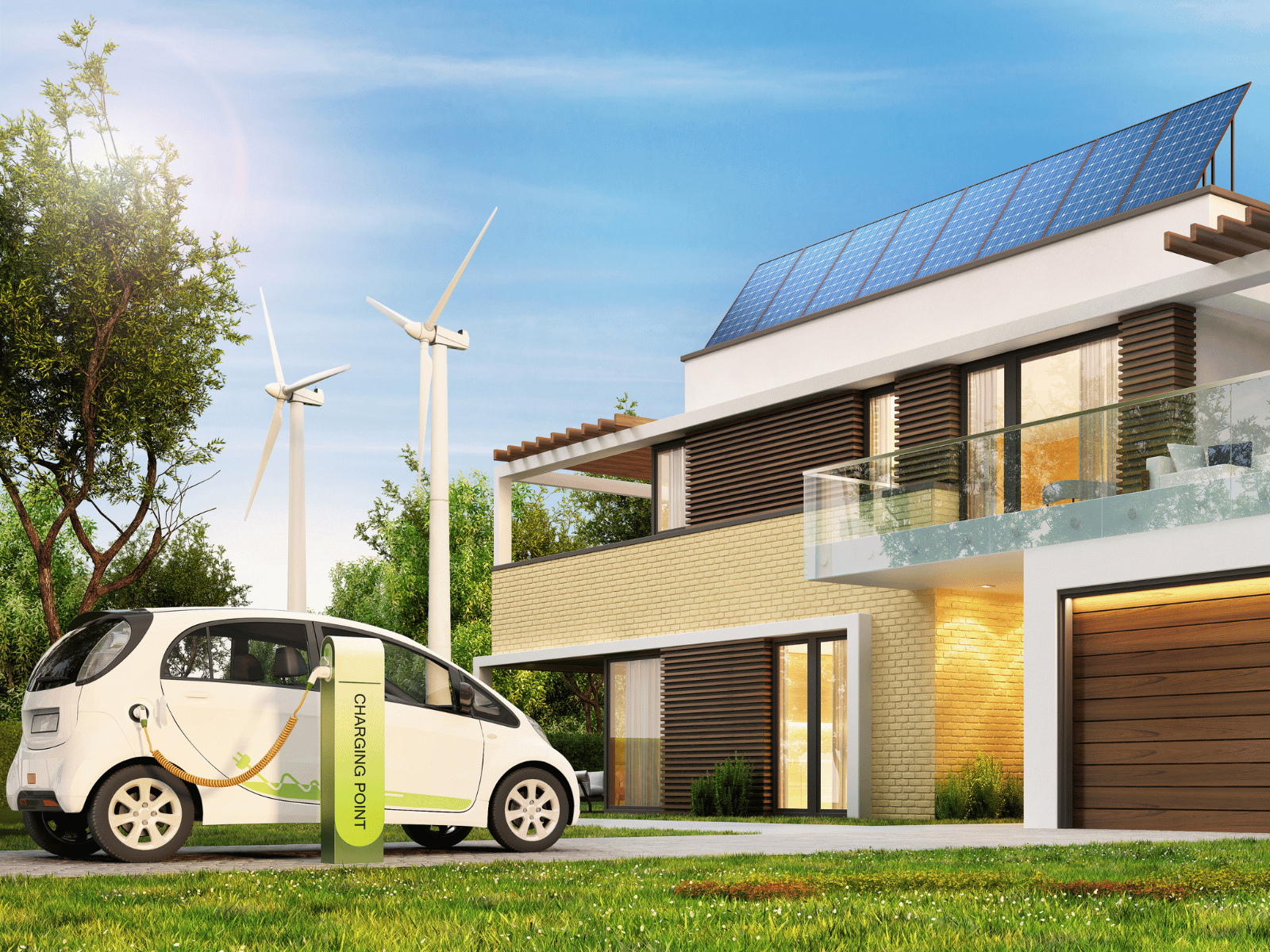Introduction
In the last ten years, the solar energy world has really boomed. This is thanks to better technology, cheaper prices, and more people realizing we need cleaner ways to make electricity. But, there’s a big problem with solar power: it’s not always there when you need it. The amount of energy from the sun changes a lot – it’s at its highest when the sun is shining bright and stops when it gets dark or cloudy. This is why finding ways to store solar energy is super important. Solar energy storage means we can keep the extra power the sun gives us during the day and use it later when there’s less sun or at night. This makes solar power a lot more reliable and steady, giving us the electricity we need anytime.
The Role of Solar Energy Storage
Have you ever thought about what happens to solar power when clouds cover the sun or at night when there’s no sunlight? Well, that’s where energy storage comes into play. It’s like saving a sunny day in a giant battery so we can use that sunshine even when it’s dark or rainy. Let’s dive into why energy storage is a game-changer for solar power.
Imagine if your phone only worked when it was plugged in and charging. It wouldn’t be very useful, right? Solar panels are a bit like that. They produce electricity when the sun is shining, but we need that electricity even when it’s not. Energy storage acts like a power bank for your phone but for your whole house or even a whole city, storing the extra solar energy made during the day for use at night or on cloudy days.
Power Without Sun
Solar energy doesn’t show up on a regular schedule. It’s like a bus that doesn’t have a timetable; it arrives when it’s sunny and stops when it’s not. Energy storage helps by making sure that, even when the “solar energy bus” isn’t running, we still have power. It evens out the ups and downs, making sure that there’s always enough energy for everyone’s needs. Using solar power helps the planet because it’s clean energy — it doesn’t pollute the air like burning coal or gas. But to make the most of it, we need to store it. That way, we can use clean solar power even when the sun isn’t shining, instead of turning to polluting energy sources. It’s like having a stash of healthy snacks for when you’re hungry instead of eating junk food.
Not everyone lives in a place where it’s sunny all the time. Energy storage means you can use solar power even in places where the sun plays hide and seek. It’s like recording your favorite TV show to watch later when you have the time. With energy storage, more people in different places can use solar power, making it a real option for more of us. Knowing we can store and use solar power anytime makes it a more attractive choice for people and businesses. If people know they can use solar power even when it’s dark, they’re more likely to install solar panels. This can lead to more clean energy use and less reliance on fossil fuels, which is great for the planet.
Types of Solar Energy Storage Solutions
When we talk about storing solar energy, it’s like saving sunlight in a box so we can use it later. Different types of “boxes” (or batteries) have their own special features. Let’s dive into a few kinds and see what makes them tick.
Lithium-Ion Batteries
You’ve probably heard of lithium-ion batteries because they’re in a lot of stuff we use every day, like smartphones and laptops. They’re also super popular for storing solar energy. Here’s why:
- They’re Compact: Lithium-ion batteries can hold a lot of energy in a small space. This means you don’t need a huge area to store your solar power, making them perfect for homes or businesses.
- Quick to Charge and Use: They charge up and are ready to go pretty fast, which is great when you need to store solar energy quickly or use it in a pinch.
- Costs Are Going Down: As more people use these batteries, they get cheaper to make and buy. This is good news for anyone looking to use solar energy because it makes the whole setup more affordable.
But, they’re not perfect. Getting the lithium and other materials we need to make these batteries can be tough on the environment, and figuring out how to recycle them is something we’re still working on.
Flow Batteries
Flow batteries are a bit like a magic trick. Instead of storing energy in solid stuff like most batteries, they use liquids. This has some cool advantages:
- Long-Lasting: Flow batteries can last a really long time. Imagine having a battery that keeps going, not just for a few years, but for decades.
- Size Can Change: If you need more power, you just add more liquid. This makes flow batteries awesome for big projects, like providing backup power for a whole neighborhood or a large business.
- Safe and Sound: They’re generally safer and don’t have the same fire risks as other batteries.
The downside? They can be pricey and take up more space, which might not work for everyone.
Other Alternatives
Scientists are always on the lookout for new ways to store solar energy. Here are a couple they’re excited about:
- Sodium-Ion Batteries: These are kind of like lithium-ion batteries but use sodium, which is way more common and less expensive. They’re not quite as good at storing energy yet, but they’re getting better and could be a cheaper option down the road.
- Solid-State Batteries: Imagine batteries without any liquid inside, which makes them safer and they could last even longer. They’re still being worked on, but they could be a big deal for solar energy storage.
All these different types of batteries are important because they help solve one of the biggest puzzles with solar energy: how to keep the lights on when the sun isn’t shining. By picking the right type of battery for the job, we can make solar power more reliable, which means it can be used for more things, like powering homes, schools, and even entire towns.
Innovations in Battery Technology
Innovations in battery technology are like the cool new upgrades in your favorite video game or the latest features on your smartphone — they make everything better and more exciting. As we use more solar power, we need better ways to store that energy so we can use it when the sun isn’t shining. Scientists and engineers are working on some amazing new battery technologies to help us do just that.
Longer-Lasting
One of the biggest goals in battery innovation is to make batteries that can store more energy and last longer before they need to be replaced. Imagine if your phone’s battery could last for days without needing a charge or if your electric car could go hundreds of miles more on a single charge. That’s the kind of future these innovations could create.
Better Materials
Researchers are experimenting with new materials for batteries that pack more power and don’t wear out as quickly. They’re looking at stuff like silicon, which could help batteries store more energy and new designs that make batteries more efficient.
Eco-Friendly Alternatives
Another big focus is on making batteries that are kinder to our environment. Right now, making and recycling batteries involves some materials that aren’t great for the planet. But what if we could use materials that are easier to find and safer to use? Scientists are excited about things like sodium-ion batteries. Sodium is way more common than lithium (which most batteries use now), and it could make batteries cheaper and more environmentally friendly. They’re also working on better ways to recycle batteries, so we can reuse the materials instead of throwing them away. This would help us cut down on waste and make battery production more sustainable. Learn more about lithium versus sodium-ion batteries!
Solid-State On the Horizon
There are also some completely new types of batteries on the horizon that could change everything. Solid-state batteries are a big deal because they use solid materials instead of liquids, which can make them safer and help them store more energy. Imagine a battery that can charge super fast and doesn’t have any risk of leaking or catching fire — that’s what solid-state technology could bring.
It’s not just scientists in labs who are working on these innovations. Governments and companies all over the world are investing a lot of money into developing new battery technologies. They know that better batteries are key to using more renewable energy like solar power, and they want to be part of the solution.
Case Studies: Successful Solar Energy Storage Projects
Around the globe, brilliant minds are working on cool projects that combine solar power with battery storage. These projects help keep the lights on even when the sun isn’t shining. Let’s review some of these projects to see how they’re making a big impact.
The Hornsdale Power Reserve, Australia
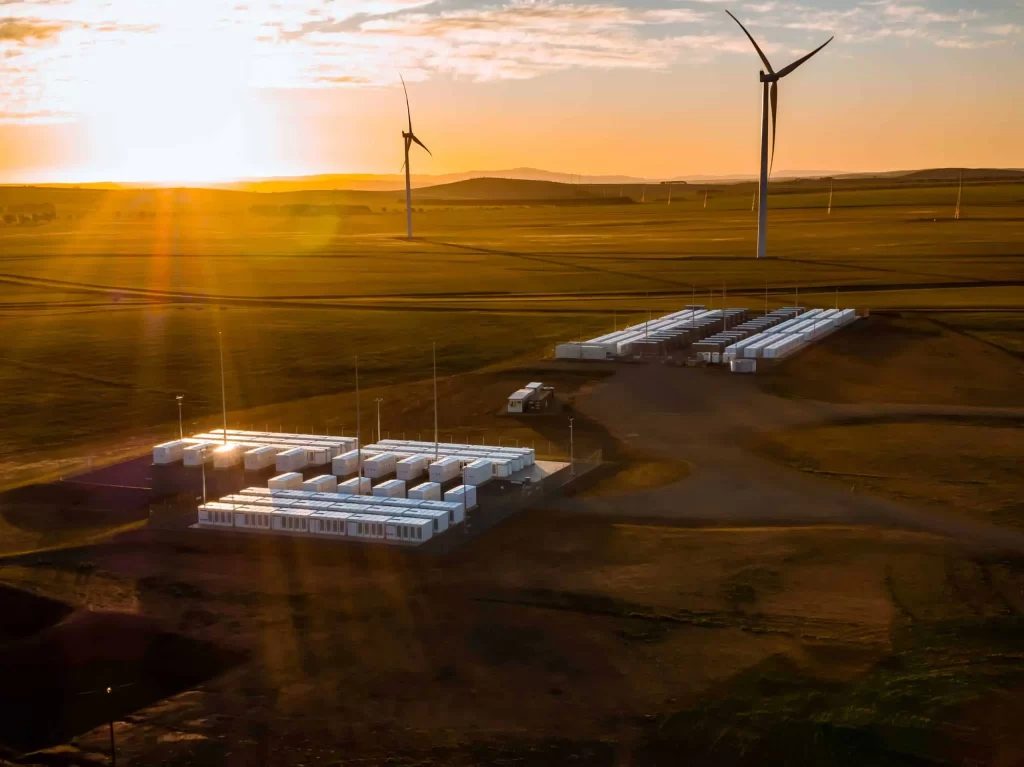
Down Under, in Australia, there’s a place called the Hornsdale Power Reserve. It’s home to one of the world’s largest battery storage systems, and it’s paired with a huge wind farm. Before this project, the area faced a lot of power outages, especially during storms. But now, thanks to this massive battery, they can store wind energy and use it later when the wind isn’t blowing.
What’s super cool about this project is how fast it reacts to the grid’s needs. In just milliseconds, it can provide electricity to thousands of homes. This has saved the community millions of dollars by avoiding power outages and reducing energy costs.
Kauai Island, Hawaii, USA
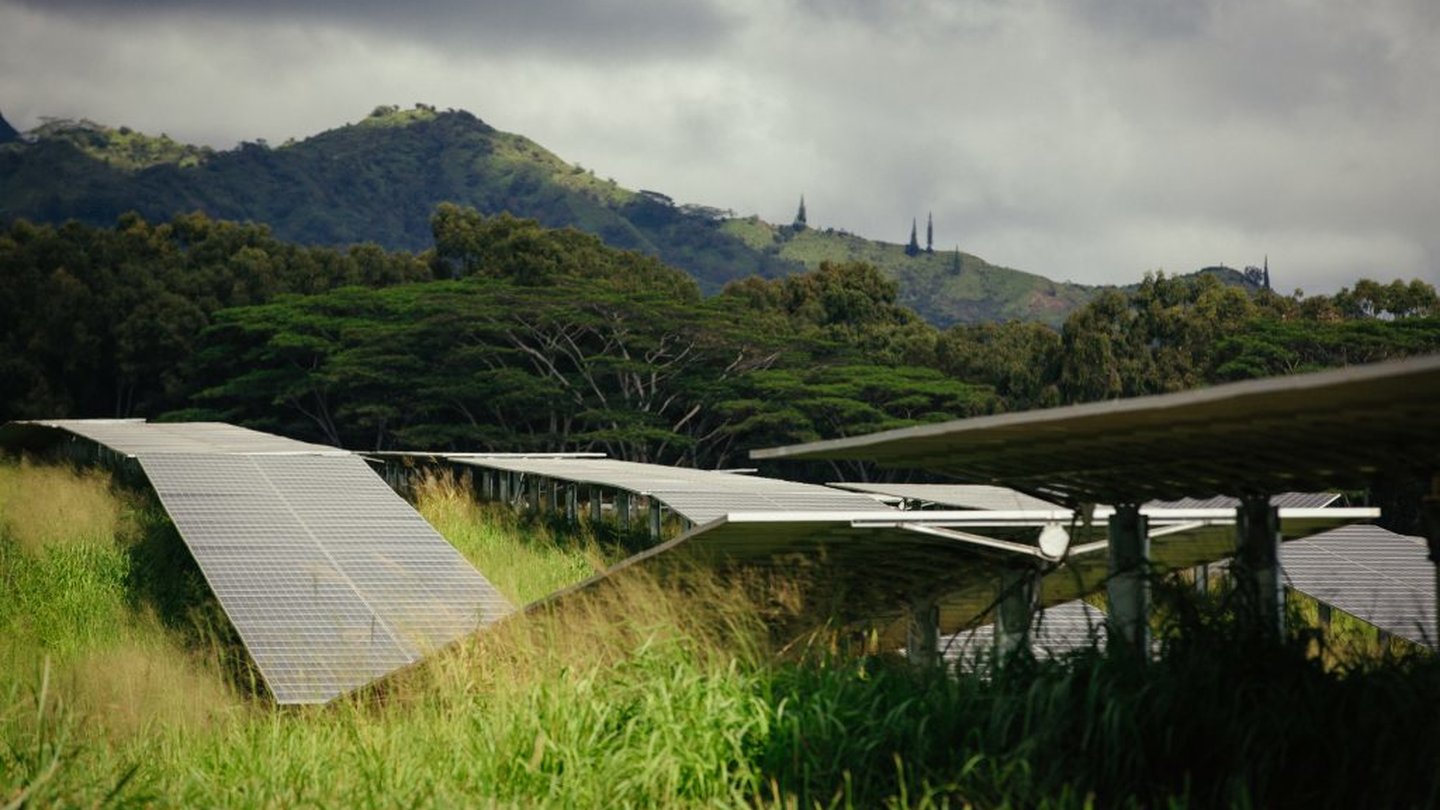
Hawaii’s Kauai Island is known for its stunning landscapes, but it’s also a leader in solar energy storage. The island has a solar storage project that helps power the island with the sun’s energy, even after sunset. Before this, the island relied heavily on diesel generators, which were not only expensive but also bad for the environment.
This project uses a huge array of solar panels and a storage system to keep the island running on clean energy long after the sun goes down. It’s helping Kauai move towards its goal of using 100% renewable energy by 2045 and shows how islands and remote communities can use solar and storage to become more energy independent.
The Mohammed bin Rashid Al Maktoum Solar Park, United Arab Emirates

In the heart of the desert near Dubai, the Mohammed bin Rashid Al Maktoum Solar Park is setting records. It’s one of the largest solar parks in the world, and it includes a section just for testing new solar and storage technologies. This park is crucial because it shows how solar power can thrive in one of the harshest environments on Earth – the desert.
The park uses solar panels that track the sun across the sky to maximize energy capture and includes cutting-edge battery storage to ensure that the lights stay on even when the sun isn’t shining. It’s a key part of Dubai’s plan to become a global leader in clean, renewable energy.
Minster, Ohio, USA
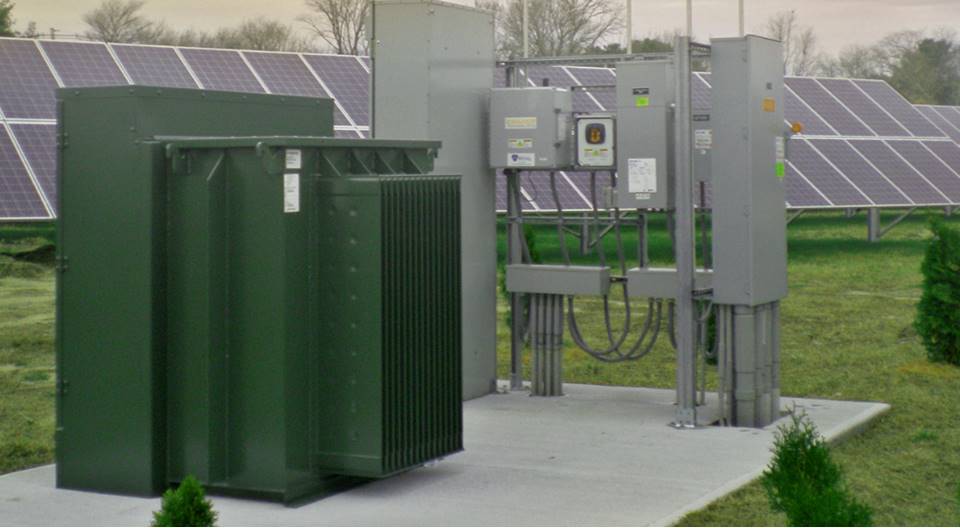
In the small town of Minster, Ohio, there’s a project that combines solar panels with energy storage in a way that benefits the whole community. This project generates clean energy and also helps stabilize the local grid, making power more reliable for everyone.
What’s unique about the Minster’s project is how it helps the town save money on energy and make money by selling excess power back to the grid. It’s a great example of how small towns can take advantage of solar and storage to boost their economy and move towards sustainable energy.
Insights From These Solar Energy Storage Projects
All these projects share a common goal: to tackle the challenge of solar power’s intermittency. They show that with the right setup, solar power can be reliable day and night, in any weather. Here’s what we can learn from them:
- Innovation Is Key. Each project uses innovative technology to store solar energy efficiently, proving that creative solutions can come from anywhere in the world.
- Community Benefits. These projects have huge benefits for their communities, from reducing energy costs to providing a more reliable power supply.
- Environmental Impact. By relying more on solar power and less on fossil fuels, these projects are helping reduce pollution and combat climate change.
- Global Potential. From the deserts of Dubai to the islands of Hawaii, these case studies show that solar energy storage can work in very different environments.
These projects are just the beginning. As technology improves and costs continue to fall, we’ll see more and more solar plus storage projects popping up around the world. They’re not only keeping the lights on; they’re lighting the way to a cleaner, more sustainable future for everyone.
Challenges of Solar Energy Storage
As we dive into the world of solar energy storage, it’s like exploring a new frontier. It’s filled with excitement and possibilities but also comes with its fair share of hurdles. Let’s break down some of the challenges and then look ahead to the bright future of solar energy storage.
The Cost Factor
Imagine you’re saving up for a new bike, but the price is pretty high. That’s a bit like the current situation with solar energy storage. The technology, especially the batteries, can be expensive. This cost is one of the biggest obstacles preventing more people and businesses from jumping on the solar storage bandwagon. It’s like wanting to build a bigger and better playground but needing more funds to make it happen.
Scalability
Picture trying to make a small toy car big enough to ride in. It’s not just about making it larger; you need to ensure it can still run smoothly and efficiently at a bigger size. This is the challenge of scalability with solar energy storage. It works well on a small scale, but we need to figure out how to efficiently expand it to power entire cities or industries without losing effectiveness or becoming too costly.
Environmental Concerns
Using solar energy helps protect the environment by reducing our reliance on fossil fuels. However, the production and disposal of solar panels and batteries have their environmental impacts. It’s like realizing the paint used to make a beautiful mural is harmful to the environment. We need to find ways to make and recycle solar storage components that don’t harm our planet.
Despite these challenges, the future of solar energy storage shines brightly with potential and promise.
Solar Energy Storage – A Bright Future
Inventors and scientists work every day to come up with new materials for batteries that are cheaper, more efficient, and environmentally friendly. Around the world, research aims to find alternatives to current battery materials, develop new storage methods, and create scalable solutions. We’re looking at a future where batteries might charge faster, last longer, and have a smaller environmental footprint. There are so many solar innovations transforming our world that energy storage is a non-negotiable for moving forward.
Affordable Solar Energy Storage Solutions Worldwide
Just as computers and cell phones became more affordable over time, we can expect the cost of solar storage technology to decrease as it becomes more widespread. This means that more people and businesses will be able to afford to install solar energy storage systems, making clean energy accessible to everyone. As we become better at storing solar energy, we can rely on it more for our daily energy needs. This means less burning of fossil fuels, which is good news for our planet. Imagine a world where clean, renewable energy powers our homes, schools, and offices, leading to cleaner air and a healthier environment.
With the growing awareness of climate change and the need for sustainable energy solutions, countries around the world are investing in solar energy storage. This global effort means we’ll see more innovation, more efficient technologies, and a faster move toward renewable energy sources. Solar energy storage isn’t just about individual homes. It has the potential to stabilize entire energy grids, making them more resilient to outages and fluctuations in demand. Communities can become more energy-independent, reducing their energy costs and contributing to a more stable and reliable power supply for everyone.
Conclusion
Making solar power work better and more reliably depends a lot on being able to store energy. Right now, the main issue with solar energy is that it’s not always available when we need it—like when it’s cloudy or at night. But, with good energy storage solutions, we can keep the energy produced during sunny periods and use it later. This is super important for making solar power a dependable source of energy. To keep improving solar power and make it truly sustainable, we need to keep coming up with new and better ways to store energy. Investing in these innovations will help us get the most out of solar energy and play a big part in moving towards a cleaner, more sustainable future. Getting better at storing energy will make solar power a key player in our quest for greener energy solutions.

